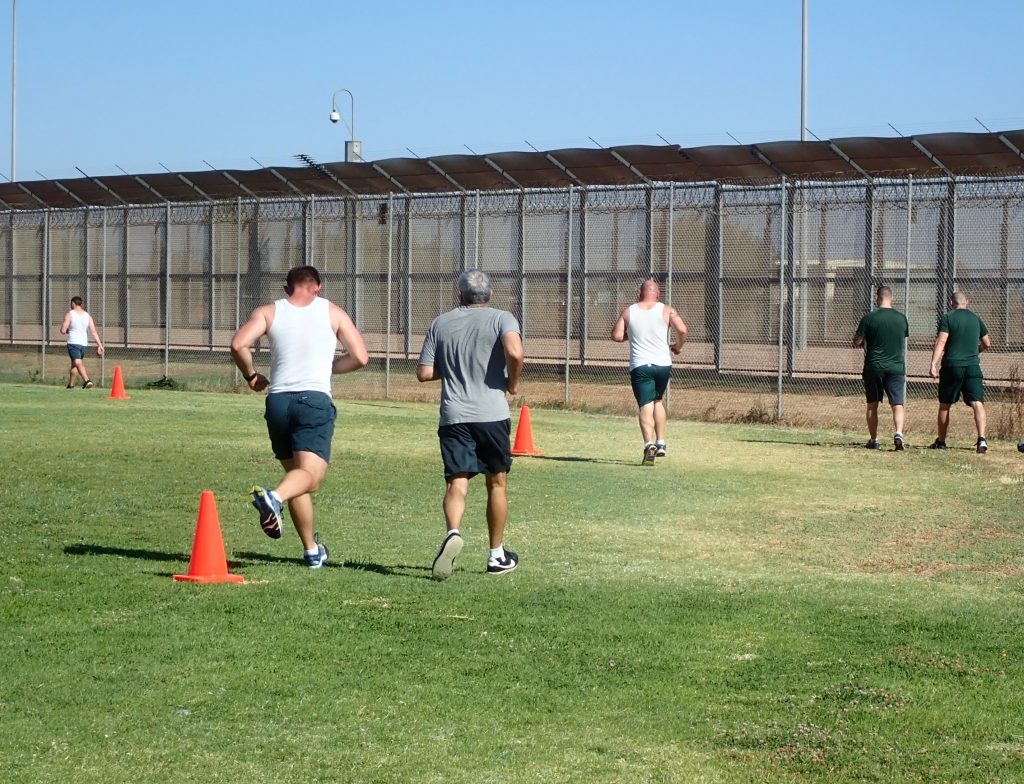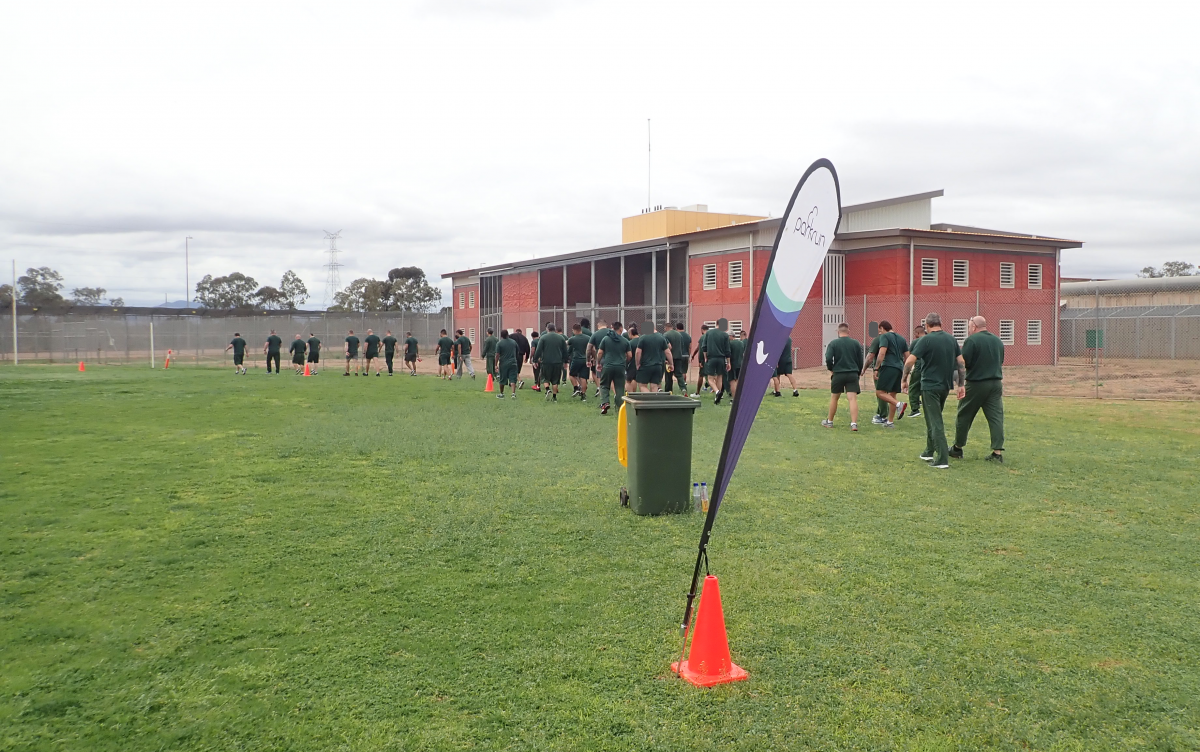If the idea of three or more laps makes you feel dizzy, imagine running the 21 laps of Devil’s Peak parkrun in South Australia.
It’s one of the more unique parkruns in Australia, but not an event that every parkrunner will have an opportunity to experience.
Devil’s Peak is one of nine parkruns held in a custodial setting in Australia. It was the second to launch in South Australia, after Mobilong parkrun.
It’s held in Port Augusta Prison, the largest regional prison in South Australia, just south of Port Augusta. It has around 600 residents of low, medium and high security and a high proportion of Aboriginal residents.
“parkrun is priority number two after Aussie Rules football,” says Event Director Jeff Bowey, who is also activity co-ordinator at the prison.
“We have a high percentage of indigenous prisoners, football is priority number one across the majority of the cohort; parkround would be a close second.
“My guys are always getting asked about it. We’ve registered more than 700 over 18 months.
“We have a high turnover so some will come in, move through the units and then move on.
“Others will be here for a very long time.
“We’ve had many go from here to Mobilong and I’m having conversations with another prison about setting up a parkrun there.”
The beginning
Devil’s Peak parkrun launched on December 19 2019 with 33 parkrunners and eight volunteers.
“I thought I’d get six a weekend, just because of the cohort. We’re a high security environment with lots of restrictions but we’re getting around 50 every week.
“Mobilong has a different cohort and nearly all of them run, there’s a big competition.
“We have half a dozen runners and the rest are walkers.”
The idea to start a parkrun at work came from Jeff’s wife Maggie. She started running at Port Augusta parkrun.
Jeff says he thought it would be a good programme for prison residents. He looked it up and discovered prisons were already holding parkrun events.
At the time there were none in South Australia, but Mobilong was about to launch.
“I went straight to parkrun about getting one here. They came out and had a look around. They were very positive. We had a few things we had to work through to get it to work.
“One of our biggest headaches was because of the size of our oval, the parkrun is 21 laps of the oval clockwise.”
Most parkrunners can count the two, three or sometimes four laps of an open parkrun course. But for runners at Devil’s Peak there’s a special counting system using paper tags.
Each participant gets a bundle of tags and drops one in a bucket at the end of each lap to help ensure they complete the full course.
“The walkers will have one person in charge of counting laps.”

Benefits
After the event Jeff produces a newsletter with photos and results so participants can gauge their progress or see what their peers achieved.
Jeff says photos are hard to come by for a resident and they can be sent on to a family member.
Before parkrun launched at Devil’s Peak Jeff put out a questionnaire asking residents for expressions of interest.
From that he had 30 keen to take part, most days of the week the activities staff register new parkrunners.
The public can look up results of custodial events worldwide, as they can open events.
There’s a degree of confidentiality with custodial parkrunners given a pseudonym surname. At Devil’s Peak these surnames are all towns in Australia and typically start with the same initial as their surname.
If they transfer to another facility, or are released at the end of their sentence, they are able to keep parkrunning with the same barcode and accumulate more runs to their profile.
“We had one resident who was here from the launch of our event. He was a complex prisoner for a bunch of reasons and had spent a long time in prison.
“He was released and moved interstate. Because we register the parkrunners, their results come to our email.
“I started seeing results come through for this parkrunner. He was still participating in parkrun after he had been released.
“We thought ‘how good was this’.
“The intent was to get prisoners when they leave here to get a different peer group on the outside. If we can get them to parkrun instead of going back to whatever peer group they’ve come from then they’re going to be among people building a life and with a community mindset. It’s life changing.
“He was volunteering as well as running. That was very satisfying.”
Why parkrun?
Not everyone at the facility is able to participate in parkrun. Jeff says it’s open to those in particular units and is also viewed as a reward for positive behaviour.
Some parkrunners who are able to run are serving a sentence of between 20 and 30 years.
“They know they’re still in prison but for that time it feels like they’re not.
“Wherever you look there’s razor wire and fences but it still brings that level a step down from your everyday prison environment.
“Often there’s a perception of why are we giving them these things to do?
“It’s about trying to create what is similar in the community so when they get out they’re in a mindset that more reflects that so they can fit back in.
“It’s a non competitive exercise. Prisons are notorious for gym junkies, parkrun offers a different context.
“One of the benefits is after the parkrun the units these people come from are a much more relaxed environment.
“The highlight has been the high number of prisoners who are engaged and do it every week. We still can’t believe we have this many.”
Devil’s Peak is named for one of the peaks in the Flinders Ranges, which overlooks Port Augusta Prison.
